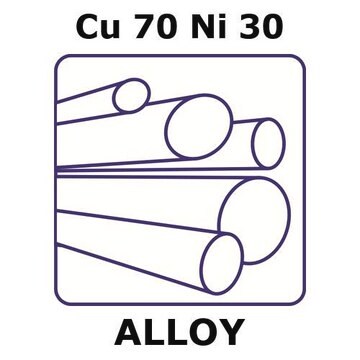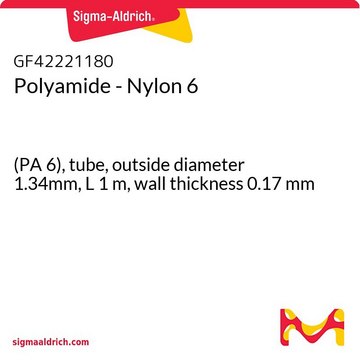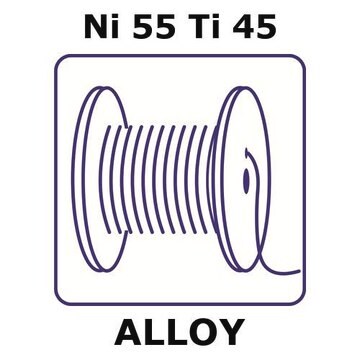GF50216352
Molybdenum
rod, 100mm, diameter 12mm, centerless ground, 99.9%
Synonym(s):
Molybdenum, MO007922
Sign Into View Organizational & Contract Pricing
All Photos(2)
About This Item
Empirical Formula (Hill Notation):
Mo
CAS Number:
Molecular Weight:
95.94
MDL number:
UNSPSC Code:
12141727
PubChem Substance ID:
NACRES:
NA.23
Recommended Products
Assay
99.9%
form
rod
manufacturer/tradename
Goodfellow 502-163-52
resistivity
5.0 μΩ-cm, 20°C
L × diam.
100 mm × 12 mm
bp
4612 °C (lit.)
mp
2617 °C (lit.)
density
10.3 g/mL at 25 °C (lit.)
SMILES string
[Mo]
InChI
1S/Mo
InChI key
ZOKXTWBITQBERF-UHFFFAOYSA-N
General description
For updated SDS information please visit www.goodfellow.com.
Legal Information
Product of Goodfellow
Choose from one of the most recent versions:
Certificates of Analysis (COA)
Lot/Batch Number
Sorry, we don't have COAs for this product available online at this time.
If you need assistance, please contact Customer Support.
Already Own This Product?
Find documentation for the products that you have recently purchased in the Document Library.
Bernd Masepohl et al.
Advances in experimental medicine and biology, 675, 49-70 (2010-06-10)
The vast majority of the purple nonsulfur photosynthetic bacteria are diazotrophs, but the details of the complex regulation of the nitrogen fixation process are well understood only for a few species. Here we review what is known of the well-studied
Ralf R Mendel et al.
Biochimica et biophysica acta, 1823(9), 1568-1579 (2012-03-01)
The transition element molybdenum (Mo) needs to be complexed by a special cofactor in order to gain catalytic activity. With the exception of bacterial Mo-nitrogenase, where Mo is a constituent of the FeMo-cofactor, Mo is bound to a pterin, thus
Angel Llamas et al.
Metallomics : integrated biometal science, 3(6), 578-590 (2011-05-31)
Molybdenum (Mo) is a very scarce element whose function is fundamental in living beings within the active site of Mo-oxidoreductases, playing key roles in the metabolism of N, S, purines, hormone biosynthesis, transformation of drugs and xenobiotics, etc. In eukaryotes
Yilin Hu et al.
Microbiology and molecular biology reviews : MMBR, 75(4), 664-677 (2011-12-01)
Nitrogenase catalyzes a key step in the global nitrogen cycle, the nucleotide-dependent reduction of atmospheric dinitrogen to bioavailable ammonia. There is a substantial amount of interest in elucidating the biosynthetic mechanisms of the FeMoco and the P-cluster of nitrogenase, because
Manuel Tejada-Jiménez et al.
Metallomics : integrated biometal science, 5(9), 1191-1203 (2013-06-27)
The viability of plants relies on molybdenum, which after binding to the organic moiety of molybdopterin forms the molybdenum cofactor (Moco) and acquires remarkable redox properties. Moco is in the active site of critical molybdoenzymes, which use to work as
Our team of scientists has experience in all areas of research including Life Science, Material Science, Chemical Synthesis, Chromatography, Analytical and many others.
Contact Technical Service








